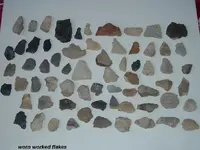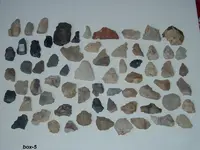bruce
Full Member
- Joined
- Dec 28, 2004
- Messages
- 224
- Reaction score
- 44
- Golden Thread
- 0
- Location
- northeast indiana
- Detector(s) used
- MP-5 Pro
I sorted these to the large worn flakes box. I think these all been worked
and resharpend. I think they had somesort of socket handle. Please
let me know what you think about them? 12-A-446
Thanks,
Bruce
and resharpend. I think they had somesort of socket handle. Please
let me know what you think about them? 12-A-446
Thanks,
Bruce
Attachments
Upvote
0






